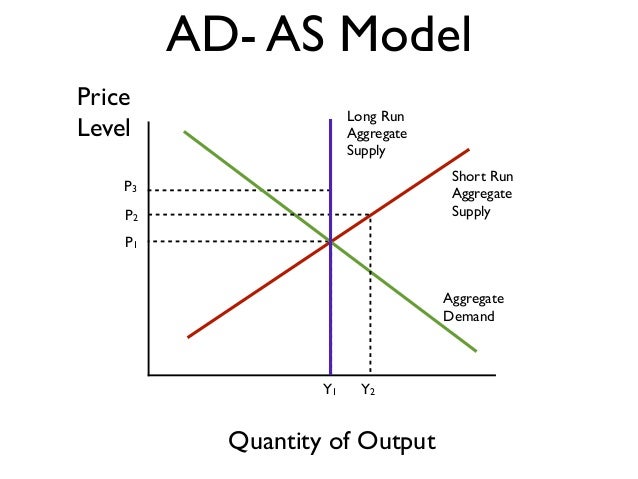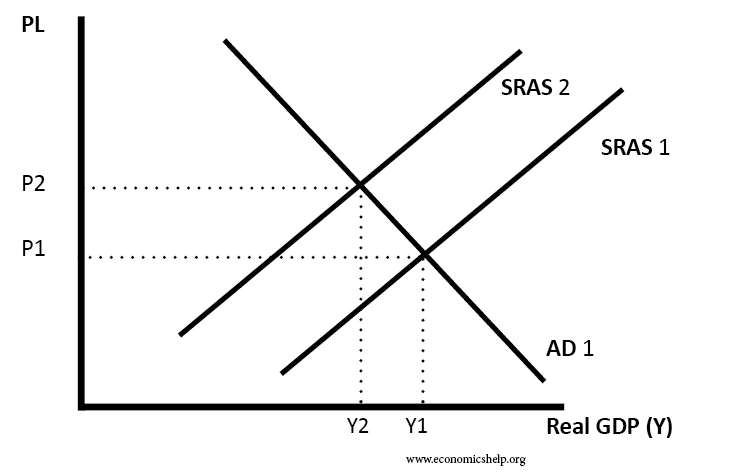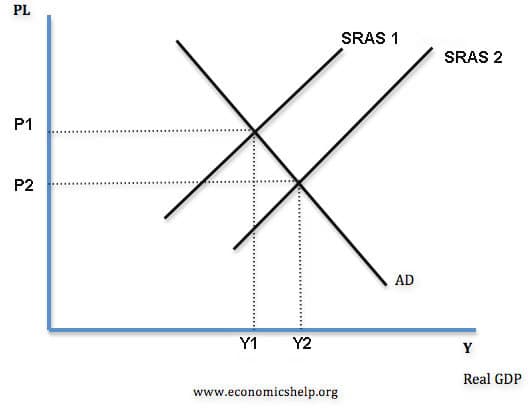The aggregate demand/ aggregate supply models
THE AD/AS MODEL



- The equilibrium of AD and AS determines the current output (REAL GDP) and the price level (PL)
- Full Employment
- Full employment equilibrium exists where AD intersects SRAS and LRAS at the same point.

- Recessionary Gap
- A recessionary gap exists when equilibrium occurs below full employment output.

- Inflationary Gap
- An inflationary gap exists when equilibrium occurs beyond full employment output.
THREE RANGES
- Horizontal or Keynesian Range: A lot of unemployed resources which creates a recession or depression.
- Includes only levels of real GDP that are less than the full employment output.
- Intermediate Range: Resources are getting closer to the full employment level, which creates pressure on wages and prices.
- Vertical/Classical Range: Where real GDP is at a level with unemployment at the full employment level, and where any increase in demand will result only in an increase in prices.
- The economy is unable to produce any more goods and services for a sustainable period of time.






Comments
Post a Comment